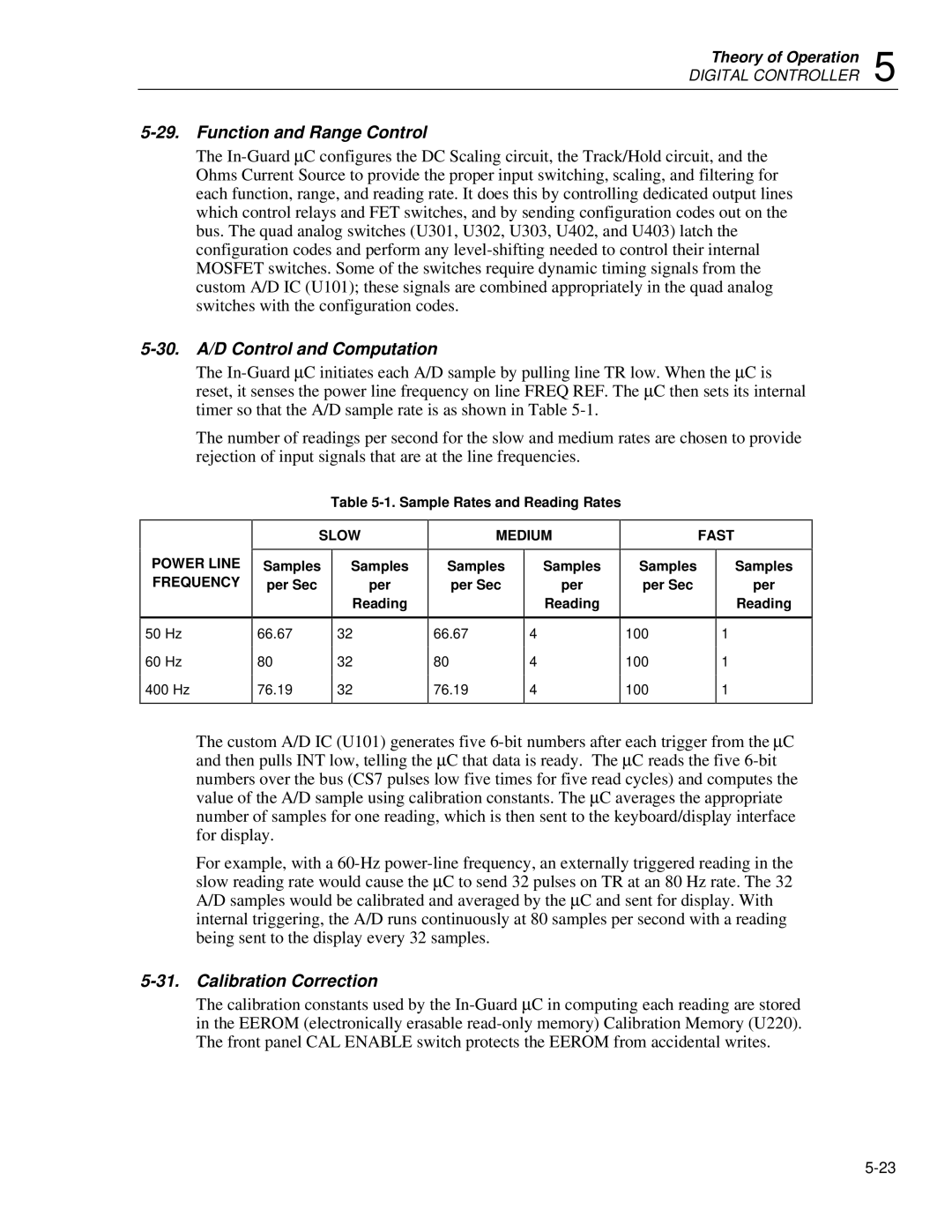
Theory of Operation 5
DIGITAL CONTROLLER
5-29. Function and Range Control
The In-Guard μC configures the DC Scaling circuit, the Track/Hold circuit, and the Ohms Current Source to provide the proper input switching, scaling, and filtering for each function, range, and reading rate. It does this by controlling dedicated output lines which control relays and FET switches, and by sending configuration codes out on the bus. The quad analog switches (U301, U302, U303, U402, and U403) latch the configuration codes and perform any level-shifting needed to control their internal MOSFET switches. Some of the switches require dynamic timing signals from the custom A/D IC (U101); these signals are combined appropriately in the quad analog switches with the configuration codes.
5-30. A/D Control and Computation
The In-Guard μC initiates each A/D sample by pulling line TR low. When the μC is reset, it senses the power line frequency on line FREQ REF. The μC then sets its internal timer so that the A/D sample rate is as shown in Table 5-1.
The number of readings per second for the slow and medium rates are chosen to provide rejection of input signals that are at the line frequencies.
Table 5-1. Sample Rates and Reading Rates
POWER LINE FREQUENCY
50Hz
60Hz
400Hz
| Samples | | Samples | |
| | |
| per Sec | | per | |
| | | Reading | |
| | | | |
66.6732
80 32
76.1932
Samples
per Sec
66.67
80
76.19
The custom A/D IC (U101) generates five 6-bit numbers after each trigger from the μC and then pulls INT low, telling the μC that data is ready. The μC reads the five 6-bit numbers over the bus (CS7 pulses low five times for five read cycles) and computes the value of the A/D sample using calibration constants. The μC averages the appropriate number of samples for one reading, which is then sent to the keyboard/display interface for display.
For example, with a 60-Hz power-line frequency, an externally triggered reading in the slow reading rate would cause the μC to send 32 pulses on TR at an 80 Hz rate. The 32 A/D samples would be calibrated and averaged by the μC and sent for display. With internal triggering, the A/D runs continuously at 80 samples per second with a reading being sent to the display every 32 samples.
5-31. Calibration Correction
The calibration constants used by the In-Guard μC in computing each reading are stored in the EEROM (electronically erasable read-only memory) Calibration Memory (U220). The front panel CAL ENABLE switch protects the EEROM from accidental writes.

